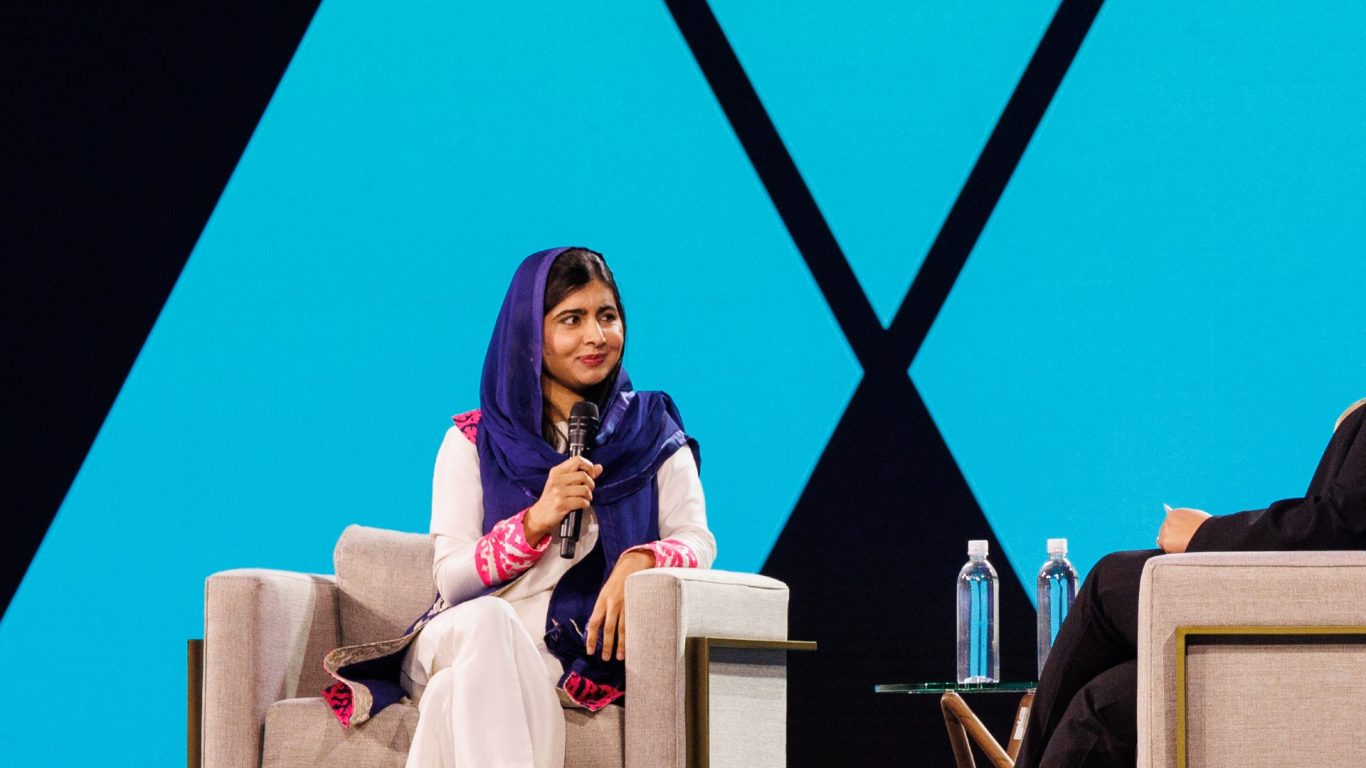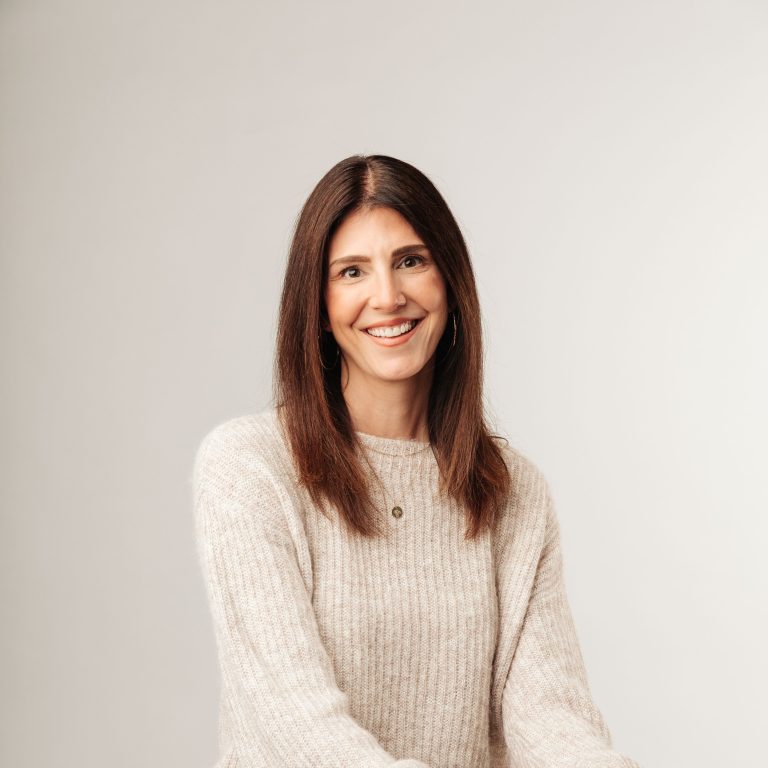Qualtrics: How to bring employee experience to life
The inside track from the tech company’s CPO Julia Anas.
Why You Should Care
Qualtrics' HR team is "customer zero" for the tech company's EX products.
How does this help build employee engagement and inclusion?
CPO Julia Anas shares all with UNLEASH at Qualtrics' 2023 X4 show.
HR leaders, don’t miss out: Join us in Las Vegas for free as a VIP guest at UNLEASH America.
It’s been a month since Qualtrics’ X4 conference in Salt Lake City, Utah, came to a close.
The two-day show saw the best and brightest from Qualtrics, its customers and celebrity guests take to the stage to discuss the latest innovations in the experience management (XM) space.
Joining her Qualtrics colleagues CEO Zig Serafin, founder Ryan Smith, as well as the likes of Martha Stewart, Malala Yousafzai and SHRM’s Johnny Taylor, on the main stage at X4 2023 was Julia Anas, CPO at Qualtrics.
UNLEASH was also lucky enough to sit down with Anas exclusively, and hear her insights into the world of work internally at Qualtrics.

Credit: Qualtrics.
Being customer zero for Qualtrics
First of all, UNLEASH was keen to find out what it is like to head up HR for a company that, among other things, produces technology that aims to improve employees’ experiences at work.
“I love being customer zero” commented Anas in her keynote session. It gives Qualtrics’ HR team first dibs to try out new products – “we try and experiment with different things, and [then] we share what we’ve done” with customers.
However, this relationship is two way – “I’ve learned from many of our customers too”. “It can be lonely in HR… so having that connection and having that peer set has really been exceptional” – in fact, it’s something that Anas really loves about her role at Qualtrics.
“There’s some things we’ve tweaked and made adjustments to thanks to the information that customers have shared with us”.
Of course, being customer zero and having employees who are so knowledgeable about HR issues and improving employee experience (EX) can be a challenge.
HR’s isn’t “all about making the popular decision”; it is about balancing employee’s views (and preferences) with the needs of the business.
Making unpopular decisions
Anas reflects on one unpopular decision that Qualtrics and the HR team had to make recently – announcing a return to the office four days a week from February 2023.
“It didn’t go over well. Not well at all. And I think fair”, shares Anas.
But the business was dealing with issues around “trust or connection across teams”; so leadership thought “this could be an opportunity…to reconnect people”.
Of course, employees expressed their views about the office return directly to HR in pulses. But because the HR team was leveraging new Qualtrics tech – XM Discover – they could see the sentiment in more detail and in real time.
Between the November 2022 and February 2023 pulses, Anas and her team could see that the return to the office was the largest topic discussion, and precisely what employee concerns.
“We didn’t ask our employees. They talked, we listened”, Anas shared in her keynote session. This ability to continuously listen is “game changing” – it meant not exhausting employees with too many pulses.
Anas added: “This amazing technology allows my team who previously would have spent hours pouring over this data to [instead] invest their team solving critical issues for the business”.
Ultimately, with the help of Qualtrics’ XM Discover tech, the HR team could see that employees were concerned about the burden of commuting and losing some workplace flexibility.
“We ended up really enabling our managers and employees with a definition of what flexibility means”, notes Anas. The aim was to avoid a one-size-fits-all approach – there isn’t a set day that people can work from home. Instead, Qualtrics is empowering to structure the working arrangements of their team with the needs of each team member so they could manage their productivity in and out of the office.
Qualtrics also realized that it wasn’t being in the office that was the problem for employees, it was the commute. Employees were sharing that “as much as they despise coming to the office, once they get here it is so valuable. There’s connection time, productivity increases, but that doesn’t change the [issue] about the commute”.
So the employer has introduced a commuter benefit in select cities – “we’re beginning to look at other cities around the globe based on feedback…from employees”. One example is Seattle where the employer will either financially contribute to commuting costs or offer priority parking for those who car share.
Anas tells UNLEASH: “The other big thing that floated to the top was…quiet spaces.
“People had gotten used to having their own zone. Now [they’re] in an environment with everybody and I just want to be able to do some focus work, but people are now on Zooms all around me”.
So, Qualtrics is working with employees to figure out the answer to balancing focus work with bringing people back together to connect and collaborate.
Creating great experiences at work
On the topic of connection, Qualtrics is laser focused on having an engaged workforce. To do this, the employer leans into its values expressed by the acronym TACOS, which stands for transparency, all in, customer centric, one team and scrappy.

Julia Anas, CPO, Qualtrics.
“Those values are the foundation of the company, but also of the building – they’re very intentionally placed on big support beams”, shares Anas.
Qualtrics has launched a TACOS award that is peer nominated. “We recognize that we’re better together than we are as individuals, but it’s nice to acknowledge when people bring the values to life and how they demonstrate business impact through our customers and through business results”.
Qualtrics also really leans into benefits to build a great EX – for Anas this is one of the things that makes the company special and unique.
“We’re an experience management company. We care about our employees’ experience and we want to help them [close] those experience gaps” – so workers are given a $1,800 experience bonus that they can spend on anything they want (that could be a weekend trip with their families or concert tickets). “It’s unique and individualized”, shares Anas.
Qualtrics is a big fan of personalized benefits in general – it asks its employees what types of benefits they would like.
Building on Qualtrics’ wellbeing benefits, which include access to the Ginger app, based on employee feedback, the company introduced a $1,200 annual wellness reimbursement. It acknowledges that “you and I have different needs”, so having a one-size-fits-all approach probably wouldn’t work.
Employees are allowed to choose where to invest that money – and that can change quarter to quarter and year to year – “it’s really about meeting the individual where they’re at and recognizing that there’s space for all”, shares Anas.
She is clear that, despite the challenging economic environment, Qualtrics remains committed to providing all employees with that wellbeing fund.
“That’s still something that’s very important to us as a company”, and it is encouraging employees to make the most of the money, particularly to support their financial wellbeing.
Getting intentional around DEIB
A final element of having an engaged workforce for Qualtrics is diversity, equity, inclusion and belonging (DEIB). “We are an anti-racist company. We want diversity that represents the world and inclusion that exceeds it” – and Qualtrics is really walking the walk here.
Anas states: “Words are just words without action.” So Qualtrics ensures it always hires the best, but that it is very “intentional” about hiring and nurturing diverse talent. “Diverse teams drive better business outcomes”.
Inclusion is particularly important to Anas and Qualtrics. “We see that inclusion is a high driver of engagement” – and this means that everyone, not just leadership, has “a responsibility to ensure that the environment that we create for our employees, colleagues and team mates is inclusive”.
To help here, Qualtrics leans into its bread and butter – listening, data and analytics. For the past three years, the company has been measuring inclusion based on three metrics: equity, belonging and authenticity.
The idea is not to “bring the majority group down, but to bring the under-represented groups up” and ensure everyone has equal opportunities at work. Pay parity work comes in here – Qualtrics has been paying equitably since 2020, but it wants to ensure things stay that way year-on-year.
Linked to Qualtrics’ extensive work around inclusion, engagement and EX, its attrition rate is flattening out this year. But when people do leave, Qualtrics does exit interviews in-person and through the XM platform to find out the reasons.
“We will always hug again,” notes Anas. She is clear that Qualtrics doesn’t take it personally when people leave, instead they keep the door open.
The time might not have been right for them to grow professionally at Qualtrics before, “but if they do come back because they had such a great experience, everyone benefits”.
The International Festival of HR is back! Discover amazing speakers from the world of HR and business at UNLEASH America on 26-27 April 2023.
Sign up to the UNLEASH Newsletter
Get the Editor’s picks of the week delivered straight to your inbox!

Chief Reporter
Allie is an award-winning business journalist and can be reached at alexandra@unleash.ai.
